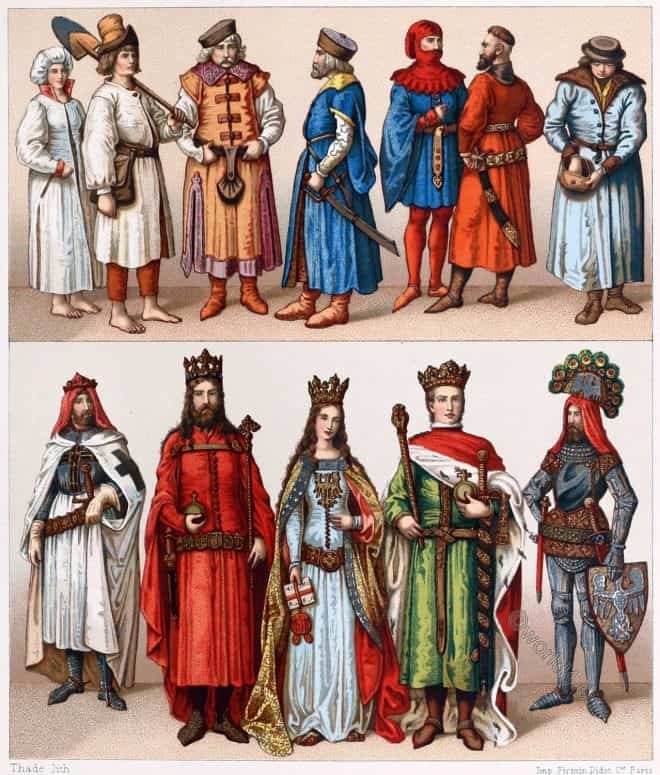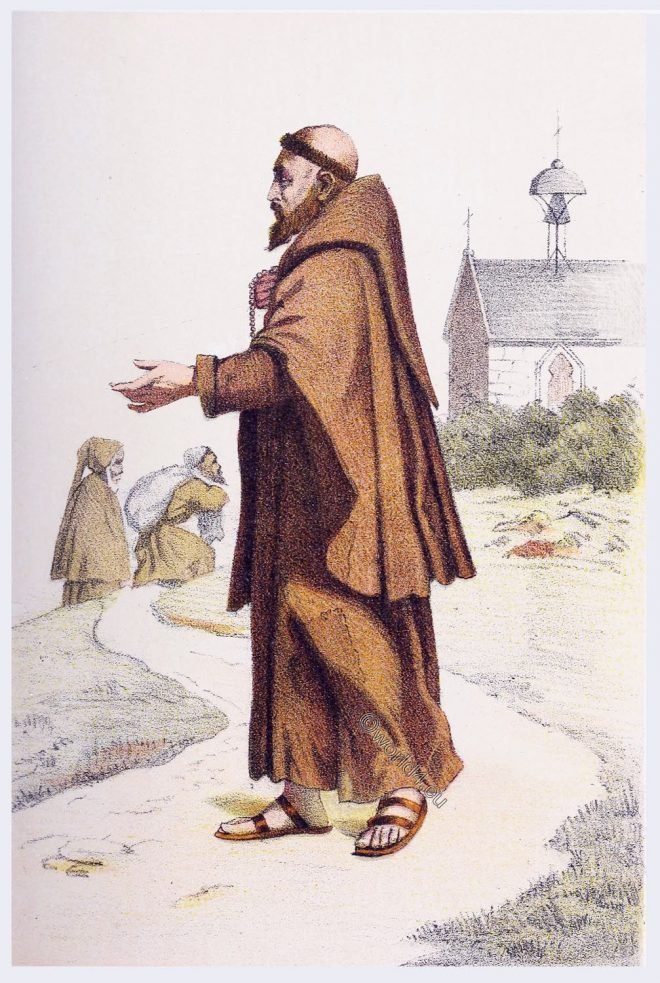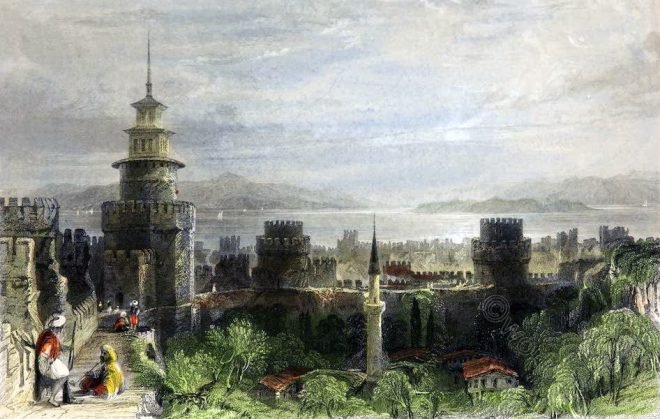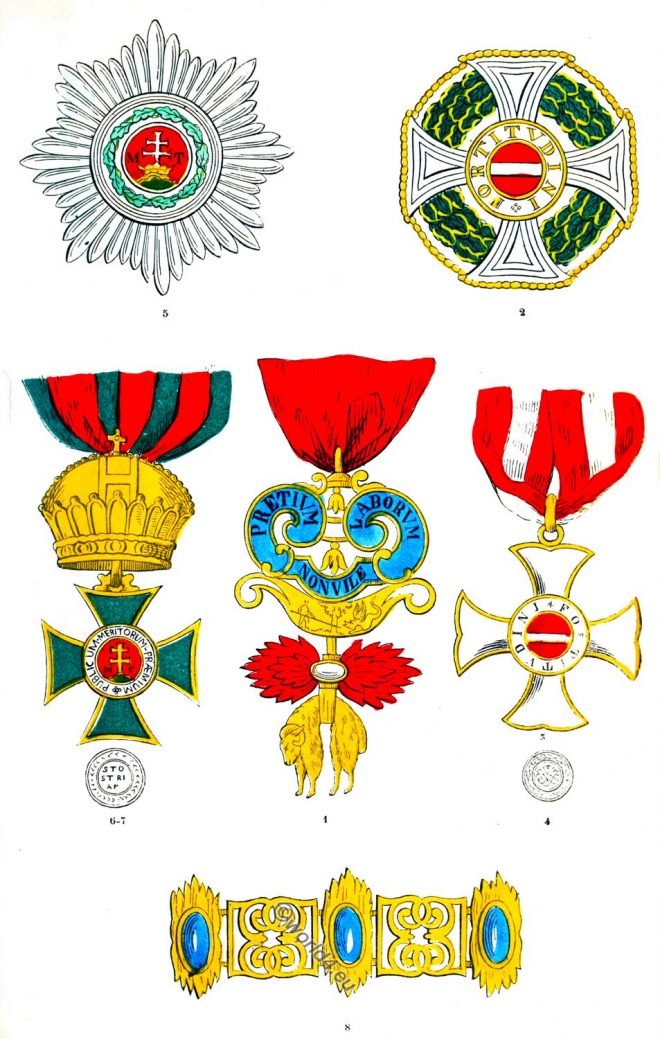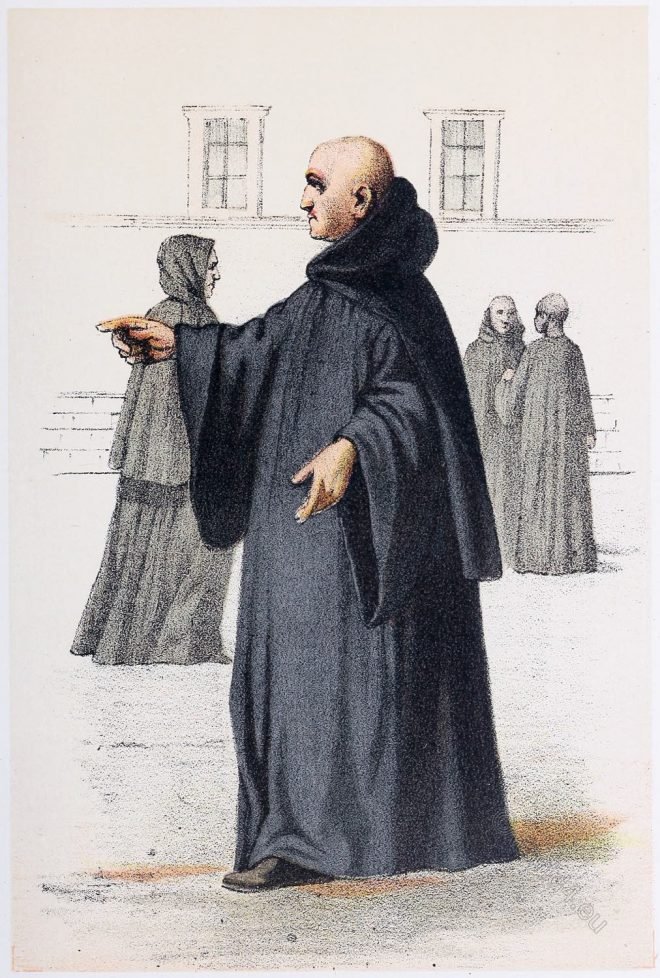Clothing in Poland in the 14th and 15th centuries. Typical and historical figures.
Category: Middle Ages
Middle Ages costumes and fashion. Period between 700 to 15th century. Style of Byzantine, Carolingian, Romanesque, Gothic and Renaissance.
Anglo Saxon ornaments. Fibula, Pendant, Pin and Buckle.
Fibula of gold and bronze. Pendant or bulla of gold. Pin and Buckle of of bronze. Discovered at Wingham, near Canterbury, in 1843.
The Capuchins. Habit of Capuchin Friars. The spread of the Order.
The Capuchins. Mathew de Bassi. Louis of Fossembrone. Exterior Persecutuins. Internal Troubles. Bernardine Ochino. Spread of the Order. Illustrious Members. Missions in America.
Table decoration. Goldsmith’s work of the Middle Ages.
THE Goldsmiths of the middle ages appear to have especially delighted in the construction of quaint decorations for the table.
Hunting scene of Sassanian Fabrics of the Middle Ages.
During the reign of the Sassanids, who ruled the Neo-Persian Empire from 250-650 AD and were distinguished by their love of luxury, the arts, especially those of weaving, reached a high level of perfection.
Historical tools of corporal punishment of earlier centuries.
Instruments of torture. Shame mask, thief catcher, thumbscrews, iron collar, branding iron. Middle Ages and modern times.
An enamelled alms dish with fleurs-de-lys and arabesque ornaments.
An enamelled alms bowl with fleurs-de-lys and arabesque ornaments. Arts and Crafts in the Middle Ages. 13th century.
Prison of the Seven Towers. Yedikule Fortress.
The Prison of the Seven Towers. Yedikule Fortress or Dungeons of the Seven Towers in Istanbul, former Constantinople.
Austria. The Order of The Golden Fleece. The insignia of the Order.
The costume of the Knights. Decorations. The principal provisions. The insignia of the Order.
The history of the Benedictines. The Order. The Habit. The Monastery.
St. Benedict. His Rule. The habit of the monks. Propagation of the order. Cluny. Fulda. Bursfeld. English Benedictines. Benedictines in the United States.

